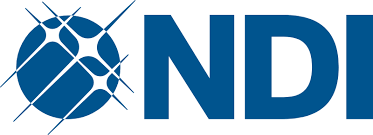Sponsors and Supporting Organizations
ImNO is grateful for the support of our sponsors and their dedication to imaging research — thank you!
If you’re interested in supporting this Meeting, take a look at our Sponsorship Opportunities here.
ImNO2024's supporting organizations are:
OICR Imaging Program
Program Co-Director: Drs. Aaron Fenster and Martin Yaffe
Sponsor: Ontario Institute of Cancer Research (OICR)
The OICR Imaging Program (OICR IP) accelerates the translation of research into the development of new imaging innovations for earlier cancer detection, diagnosis and treatment through four major projects; probe development and commercialization, medical imaging instrumentation and software, pathology validation, and imaging for clinical trials.
OICR IP facilitates improved screening and treatment options for cancer patients by streamlining advances in medical imaging through the complex pipeline from discovery through clinical translation and ultimately to clinical use.
Machine Learning in Medical Imaging Consortium (MaLMIC)
Machine Learning for Medical Imaging Working Group: Drs. Aaron Fenster, Anne Martel, Julia Publicover, Amber L. Simpson, Aaron Ward, Martin Yaffe
The Consortium was launched to accelerate research and development of machine learning solutions for unmet needs in medical imaging through collaborations between academic and clinical researchers, and with Canadian industry.
3D Ultrasound and Multi-Modality Imaging for Personalized Medicine
Lead Researchers: Drs. Aaron Fenster and Alla Reznik
Sponsor: Ontario Research Fund (ORF)
Continued developments of medical imaging systems have vastly improved our ability to visualize body tissues and processes, enabling more accurate detection of medical conditions. However, recent trends for personalized or precision medicine, i.e., delivering “the right treatment to the right patient at the right time”, impose new requirements for imaging modalities in terms of diagnostic and predictive capabilities and change the emphasis from a nonspecific to an organ-specific imaging approach - a significant paradigm shift in medicine.
Indeed, precision medicine often cannot be achieved with existing general purpose or whole-body imaging devices. Predictive and preventive precision medicine calls for new approaches where organ-specific imaging tools are customized for particular organs or diseases to obtain the highest efficacy and diagnostic capability. Dual-modality imaging is an integral part of this approach as it provides complimentary visual and quantitative information that is based on aligned morphological and functional data. We have a long history of developing innovative imaging systems used to solve clinical unmet needs, some of which have been translated clinically and commercialized. Our efforts are driven by innovations resulting in improved diagnostic accuracy as well as increased patient comfort.
The overarching goal of the ORF is to develop effective new imaging-based systems that will use ultrasound imaging with radionuclide imaging to overcome the limitations of independent systems and meet the challenges of unmet clinical needs.
Toronto Metropolitan University - Faculty of Science

GE

Siemens Healthineers

Scintica

NDI

The following organizations have supported ImNO in the past.
Industry
- 7D Surgical
- ClaroNav
- Fujifilm VisualSonic, Inc
- GE Healthcare
- Modus
- NDI
- NVIDIA
- Philips
- Scintica Instrumentation Inc.
- Shelley Medical Imaging Technologies
- Siemens Healthineers
- Synaptive
Research and commercialization organizations
- Biomedical Computing Laboratory, Queen’s University
- Biomedical Imaging Research Centre, Western University
- BrainsCAN
- Building a Better Brain: An Ontario Neuroimaging Consortium
- Canadian Atherosclerosis Imaging Network
- Cancer Care Ontario Cancer Imaging Network of Ontario (CCO-CINO)
- Cardiac Arrhythmia Network of Canada (CANet)
- Centre for Imaging Technology Commercialization (CIMTEC)
- Development & Translation of MRI Technology for Neuro-Interventional Applications
- Development of Novel Therapies for Bone and Joint Diseases
- Effective Systems for Procedure Specific Healthcare Simulation (Simulation)
- Focused Ultrasound Devices for Noninvasive Surgery and Drug Delivery (FUSD)
- Heart Failure: Prevention through Early Detection Using New Imaging Methods
- Hyperpolarized 13C MRI of Placental Metabolic Abnormalities Resulting from the Western Diet (HIH-NICHD)
- Image-Guided Device Interventions for Cardiovascular Disease
- Machine Learning in Medical Imaging Consortium (MaLMIC)
- Medical Imaging Trial Network of Canada (MITNEC)
- Next-Generation Innovations in Ultrasonics (N-Genius)
- Ontario Consortium for Adaptive Interventions in Radiation Oncology (OCAIRO)
- Ontario Consortium for Small Animal Imaging (OCSAI)
- Ontario Consortium in Imaging for Cardiovascular Therapeutics (OCICT)
- Ontario Institute for Cancer Research Imaging Pipeline Platform (OICR-IPP)
- Ontario Institute for Cancer Research Imaging Program (OICR-IP)
- Ontario Institute for Cancer Research Imaging Translation Platform (OICR-ITP)
- Ontario Institute for Cancer Research One Millimetre Cancer Challenge Program (OICR-1mmCC)
- Ontario Institute for Cancer Research Smarter Imaging Program (OICR-SIP)
- Ontario Network for Advanced Medical Imaging Detectors (ONAMID)
- Ontario Network of Excellence for Translation of Hyperpolarized MRI Technologies
- Ontario Preclinical Imaging Consortium (OPIC)
- Robarts Research Institute
- Western University’s Bone and Joint Institute
